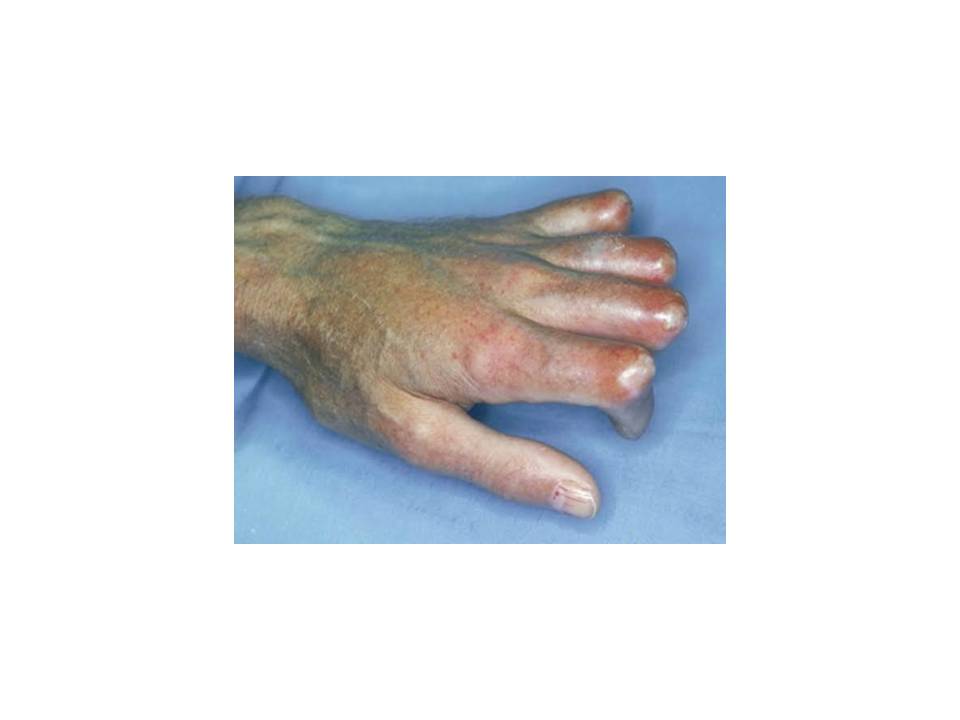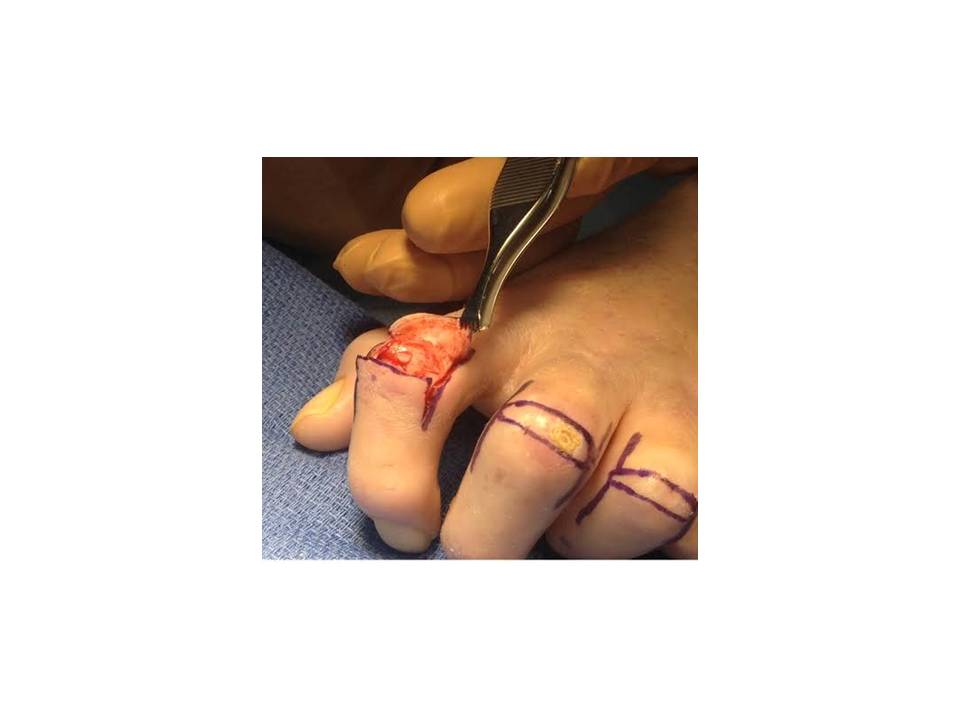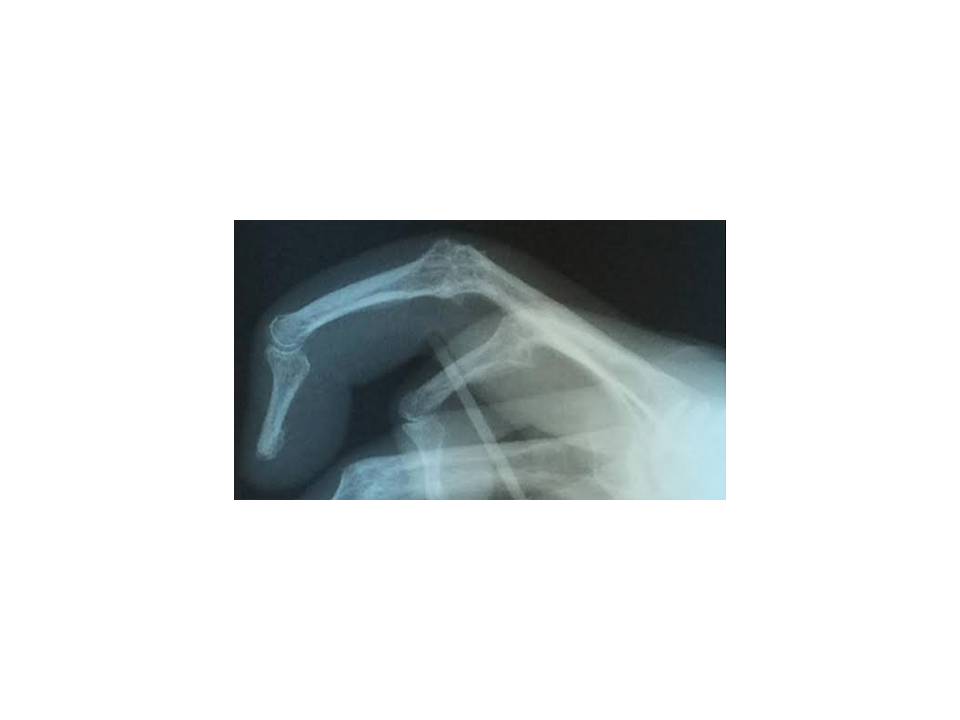Back to 2015 Annual Meeting
The Dorsal Bipedicle Flap for Proximal Interphalangeal Arthrodesis in Systemic Scleroderma
Erez Dayan, M.D., Charles P. Melone, Jr., M.D..
Mount Sinai Beth Israel Medical Center, New York, NY, USA.
The Dorsal Bipedicle Flap for Proximal Interphalangeal Arthrodesis in Systemic Scleroderma
Introduction: Systemic Scleroderma is a multifarious autoimmune connective tissue disease. It is characterized by an intrinsic fibro-occlusive vascular disorder, exacerbated by coexistent Raynaud's vasospastic syndrome. Typically, the hands demonstrate flexion contractures of the PIP joints, extension contractures of the MP joints, and adduction contractures of the thumb (Image 1). Foremost among these deformities are progressive flexion contractures often exceeding 90 degrees, leading to tension on the overlaying dorsal skin with associated reduction in dermal capillary blood flow and ulceration. In the authors' experience, surgery on scleroderma hand deformities is highly complex. This study demonstrates the successful use of a dorsal bipedicle flap as a reliable method of tension-free resurfacing after PIP arthrodesis.
Methods: 70 patients with scleroderma hand deformities requiring surgery were studied. 272 hand surgical procedures were performed, including 211 PIP arthrodesis over a 5-year period. Patients uniformly underwent resurfacing with dorsal bipedicle advancement flaps based on the dorsal cutaneous arterial branches (DCAB) of the radial and ulnar proper digital arteries for progressive PIP joint contractures exceeding 60 degrees of flexion (Image 2).
Results: All patients consistently demonstrated: (1) uncomplicated primary wound healing; (2) solid radiographic union of 68 (97%) of the arthrodesis within 8 weeks of surgery (Image 3); (3) complete eradication of dorsal ulcers; (4) marked alleviation of pain; (5) substantial functional and aesthetic improvement; (6) high levels of satisfaction with improved quality of life. Painless pseudoarthrosis occurred in 2 cases and did not require further surgery.
Conclusion: Arthrodeses with uncomplicated primary wound healing for the classic PIP joint flexion deformities of scleroderma have been consistently achieved with employment of the dorsal bipedicle advancement flap. This vascularized flap, based on the dorsal cutaneous branches of the proper digital arteries, has reliably facilitated thorough operative exposure and a tension-free would closure essential for successful PIP articular and soft tissue reconstruction.
Image 1. Classic deformity of a scleroderma hand most prominently resulting in severe PIP flexion contracture with dorsal soft tissue attenuation and ulceration.
Image 2. Bipedicle flaps designed for correction of PIP joint contractures by arthrodesis.
Image 3. Radiograph of solidly fused PIP joint 7 weeks postoperatively.
  
Back to 2015 Annual Meeting
|




